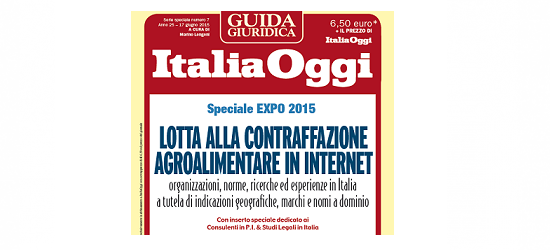
Davide Luigi Petraz – Lawyer and Managing Partner – GLP Srl, Udine
A Client of ours, a well-known winemaker who we will call “Alfa”, has been summoned by another Company operating in the same field and same geographical area, hereafter “Beta”. Beta has sued Alfa for the infringement of his exclusive rights on three-dimensional trademarks registered to distinguish his wine bottles. Following the lawsuit and the validation of the urgent preventive confiscation ruling, about 40,000 bottles were confiscated, some of which already packaged and ready for sale. The validation of the ruling was based on two specific aspects: firstly, pursuant to art. 473 PC (Penal Code), referring to the infringement of Community and international three-dimensional trademarks protecting the shape and color of particular bottles, sold both in Italy and abroad; secondly, pursuant to art. 517 PC, referring to the marketing of a considerable quantity of bottles of wine of a particular color which, imitating Beta’s in shape, color and content, was likely to create confusion in the consumer regarding the origin, provenance and quality of the product contained in the bottles. Alfa asked the Court to revoke the ruling confirming the preventive confiscation, and proved that neither the shape of the bottles, which had always been present and used in the market, nor the color of the bottle, have a particular distinctiveness to indicate the origin of the products marketed by Beta, reasserting a principle stated by the Supreme Court (Section II, case 13396) and by EU jurisprudence. On the subject of three-dimensional trademarks, the latter has said that “The criteria for assessing the distinctive character of three-dimensional marks consisting of the shape of the product itself are no different from those applicable to other categories of trade mark. Nonetheless, for the purpose of applying those criteria, the relevant public’s perception is not necessarily the same in the case of a three-dimensional mark consisting of the shape of the product itself as it is in the case of a word or figurative mark consisting of a sign which is independent from the appearance of the products it denotes. Average consumers are not in the habit of making assumptions about the origin of products on the basis of their shape or the shape of their packaging in the absence of any graphic or word element and it could therefore prove more difficult to establish distinctiveness in relation to such a three-dimensional mark than in relation to a word or figurative mark” (European Court of Justice, Ruling C-136/02, 7/10/2004 § 30). Applied to this particular case, the jurisprudence of the Court of Justice substantially tells us that the shape of a bottle, moreover in common use like the “collio” bottle and its packaging, that is, its coating with colored varnish or film, and moreover with colors commonly used and strongly described and evocative of the characteristics of the product, are not able in themselves to constitute a valid mark. Alfa pointed out that the colors are not the same but similar, and also stated that on the confiscated bottles the mark represented by a letter in relief, referring to Beta, was not infringed. Consequently, the absence of any distinctiveness of Beta’s bottles led the Court to exclude the offence pursuant to art. 517 PC. Apart from revoking the ruling confirming the preventive confiscation, de-confiscation was ordered, and the confiscated bottles returned to Alfa. In similar cases, the potential damage to the Company image must also be considered, which through Internet can amplify the negative effects of the Parties concerned.
